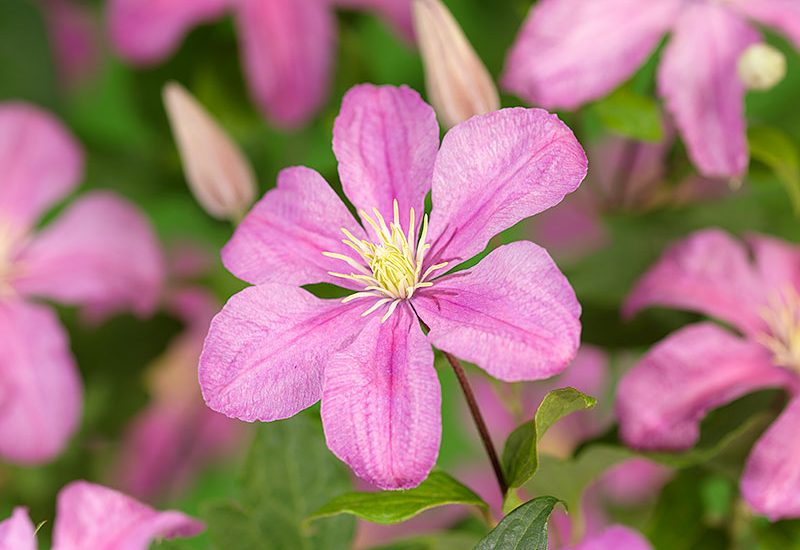Ground Cover Plants to Grow in Northern California
Looking to add some life to your Northern California landscape? Check out these favorite ground cover plants! These easy-to-grow varieties will thrive in your garden and provide a pop of color and interest.
Coyote Bush (Baccharis pilularis)
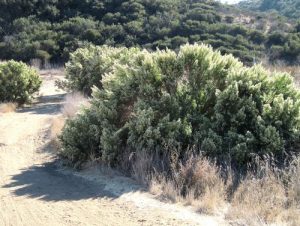
Coyote bush (Baccharis pilularis) is a common sight in Northern California. This hardy shrub is drought-tolerant and can survive in various soil types. It also has a fast growth rate, making it an ideal ground cover plant. The Coyote bush provides excellent erosion control, as its dense network of roots helps to hold the soil in place. The evergreen leaves also provide year-round coverage, helping to prevent weeds from taking root. In addition, the coyote bush is attractive to pollinators such as bees and butterflies. As a result, it can provide aesthetic and functional benefits to the landscape. The plant is drought tolerant and can grow in various soil types. It is also one of the few plants that can survive in areas frequently burned by wildfires.
California Brome Grass (Bromus carinatus)
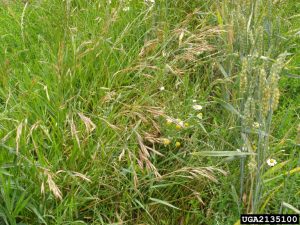
Bromus carinatus, more commonly known as California Brome Grass, is a perennial grass native to the western United States. It commonly grows in open meadows and grasslands and can also be found in disturbed areas such as roadsides and hiking trails. California brome grass is a tufted grass that typically reaches a height of 2-3 feet. The leaves are green and 13-24 inches long, with a central vein surrounded by smaller veins. The flowers are 6-12 inches long in inflorescences, and each floret is yellow or straw-colored. California brome grass is relatively easy to grow and can be found in seed mixtures for northern California. It is tolerant of most soil types but prefers well-drained soils. It also requires full sun to partial shade and does not tolerate shading from taller plants. California Brome Grass is a good option for slope erosion control and can also be used for hay or pasture.
Pinemat (Ceanothus prostratus)
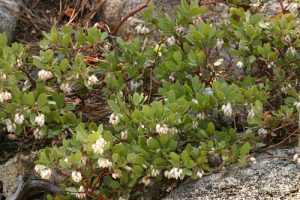
Pinemat (Ceanothus prostratus) is a low-growing, spreading shrub native to the mountains of California. It typically grows to 2-3 feet tall and 6-8 feet wide, with dark green leaves and white or pink flowers blooming in the spring. Pinemat is an excellent choice for a ground cover plant in northern California gardens. It is drought-tolerant, deer resistant, and can thrive in full sun and partial shade. Additionally, its small stature and spreading habit make it an ideal plant for covering large areas of ground. It has small, dark green leaves and produces white or blue flowers in the spring. Pinemat is an excellent ground cover plant because it is tough and drought-tolerant. It can also tolerate heavy foot traffic, making it ideal for frequent areas people or pets use. Pinemat is also relatively low-maintenance, requiring only occasional pruning to remove any straggly or damaged growth. Pinemat is a welcome addition to any garden with its handsome foliage and masses of spring flowers.
Mountain Misery (Chamaebatia foliolosa)
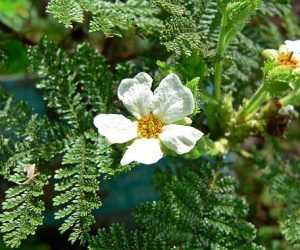
Mountain Misery (Chamaebatia foliolosa) is a low-growing, evergreen shrub that is native to the foothills of the Sierra Nevada mountains. Mountain misery is an excellent ground cover plant for dry, sunny slopes. It is drought-tolerant and able to withstand heavy foot traffic. Additionally, mountain misery helps to control erosion on steep hillsides. The deep roots of this plant help to hold the soil in place, while the dense leaf network helps deflect rain and runoff. It is an excellent choice for a ground cover plant, as it spreads rapidly and forms a dense mat of foliage. The small, dark green leaves are covered with tiny white flowers in spring and early summer. Mountain misery is tolerant of drought and poor soil and prefers full sun to partial shade. It is also deer resistant. When grown as a ground cover, mountain misery will reach a height of 6-12 inches and a spread of 6-8 feet. As a result, mountain misery is an effective tool for preventing soil erosion.
Blue Dicks (Dipterostemon capitatus)
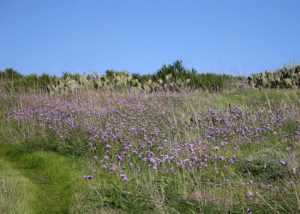
Blue Dicks is a perennial flowering plant native to the western United States. It is commonly found in California and grows best in dry, sunny areas. The plant gets its name from the blue flowers that bloom in spring and summer. Blue Dicks is a low-growing plant that only reaches about 12 inches in height. However, it can spread up to 3 feet wide, making it an ideal ground cover plant. The leaves are dark green, and the plant spreads by rhizomes. Blue Dicks is drought-tolerant and prefers full sun to partial shade. It’s a good choice for slope stabilization, erosion control, and as a ground cover in native gardens. Plants are available from nurseries and online retailers. Follow the planting instructions on the labels or website descriptions. Blue Dicks can also be propagated from seed. Collect seeds from the wild or purchase them from a seed company. Sow seeds in fall or winter, press them into the soil surface and keep them moist until they germinate. Transplant seedlings to their permanent location in the garden in spring or summer. Blue Dicks is a drought-tolerant plant and do not require much maintenance. It is a good choice for gardeners looking for a low-maintenance ground cover plant.
Thingrass (Agrostis pallens)
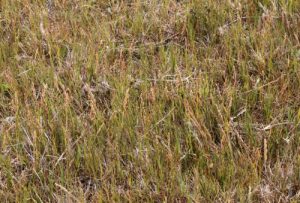
Agrostis pallens, also known as Thingrass, is a common bunchgrass native to California. It grows in many habitats, including grasslands, woodlands, and chaparral. Thingrass is a perennial grass that forms dense clumps of thin, bluish-green leaves. The plant produces small white flowers in the summer months. Thingrass is a popular choice for ground cover due to its low-growing habit and ability to spread quickly. The grass is also tolerant of drought and poor soil conditions. This makes it an ideal choice for northern California gardens. Thingrass requires little maintenance and can be left to grow without fertilizer or irrigation.
Miner’s Lettuce (Claytonia perfoliata)
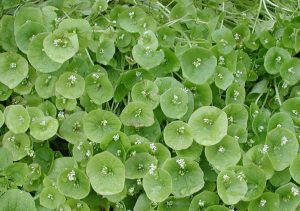
Claytonia perfoliata, also known as miners’ lettuce or winter Purslane, is a small annual plant in the Montiaceae family. Native to western North America, from Alaska to California to Colorado, it is most commonly found in the Sierra Nevada mountains. It gets its common name from the fact that it was a common vegetable of gold miners during the California Gold Rush, as it is one of the few greens that can survive and even thrive in winter conditions. Today, C. perfoliata is mostly grown as a ground cover or ornamental plant due to its pretty pink or white flowers and its ability to form a dense mat. It is a relatively easy plant to grow and will do well in most soil types as long as it has good drainage. Full sun is best, but it will tolerate partial shade. To propagate, sow seeds in spring or early summer. Thin seedlings to 8-12 inches apart when they are large enough to handle. Transplant into prepared beds or containers filled with well-drained soil mix. Water regularly until plants are established, then water only during extended dry periods. Deadhead spent flowers to encourage continued blooming. C. perfoliata will self-seed if allowed, so be sure to deadhead regularly if you don’t want it taking over your garden!
Dutchmans Pipe (Aristolochia californica)
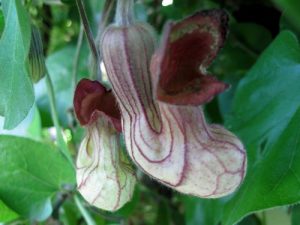
The Dutchman’s Pipe (Aristolochia californica) is a flowering plant native to California. It gets its name from the shape of its flowers, resembling the pipes Dutchmen smoked in the 17th century. The plant is a member of the Aristolochiaceae family, which contains over 500 species. The Dutchman’s Pipe is a climbing vine that can grow up to 10 feet. It has large, heart-shaped leaves and distinctive flowers that are dark purple in color. The plant blooms from April to June. The Dutchman’s Pipe is found in disturbed areas such as roadsides and construction sites. It is considered an invasive species in some parts of the world. This plant is very drought-tolerant and can survive in both full sun and partial shade. Dutchmans Pipe is an excellent choice for a ground cover because it is so versatile and easy to care for. It will quickly spread to form a dense mat that helps to prevent weeds from taking over your garden bed. In addition, this plant’s thick foliage helps retain moisture in the soil, making it an ideal choice for hot, dry climates. Dutchmans Pipe is also relatively low-maintenance, requiring only occasional pruning to keep it looking its best. With its attractive foliage and showy flowers, Dutchmans Pipe makes a great addition to any garden.
Leafy Fleabane (Erigeron foliosus)
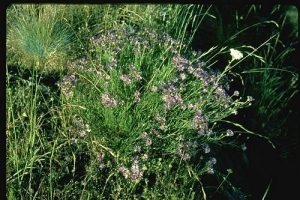
The leafy fleabane gets its name for its abundance of leaves that grow along its stems. The plant is a sunflower family member and can be found throughout North America. It typically blooms from May to August and grows about two feet tall. The leafy fleabane has small, white flowers clustered together at the end of each stem. Each flower has about ten petals arranged in a daisy-like fashion. The leaves of the plant are covered in tiny, black hairs. When touched, these hairs can cause skin irritation in some people. It grows to 6-12 inches tall. Leafy fleabane is a good choice for a ground cover plant in areas where you want to minimize weed growth. It forms a dense mat of foliage that effectively crowds out weeds. In addition, leafy fleabane is tolerant of various soil types and resistant to drought. However, it should be noted that leafy fleabane can spread aggressively and may require regular pruning to keep it under control. However, some people enjoy growing this plant because of its unique appearance.
Coffeeberry (Frangula californica)
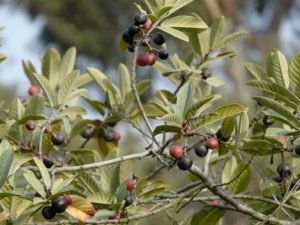
Coffeeberry is a medicinal tree native to the Northern Hemisphere. It’s a fast-growing, evergreen that grows up to 20 feet tall in a single season. The leaves are oval and have serrated edges, with small hairs on their underside that make them feel fuzzy or furry. The leaves grow opposite one another on the stem, arranged in pairs at different heights along the stem, depending on what point in the year. The leaves of the tree turn a chocolate-brown color in fall, but their bright red to burgundy-red color during spring, summer, and early fall makes them stand out in any landscape.
Coffeeberry grows best in areas that receive at least 30 inches of rainfall per year (a full 10 feet of water). It’s a surprisingly tolerant ground cover. It thrives in soil that’s moist and well-draining. Coffeeberry grows best in full shade or partial shade. Full sun is not recommended, as it makes the tree more susceptible to sunscald.
Coffeeberry is a great ground cover plant to use in Northern California, especially in areas with an ocean climate like the Pacific Northwest and the San Francisco Bay Area. The plant will not only survive in a moist environment, but it thrives in one. The best time of year to plant Coffeeberry is May through July. Fall planting is better than winter planting. Coffeeberry has a long taproot and doesn’t like disturbance after it’s planted, so fall planting when the soil isn’t as wet is the best option.
Common Selfheal (Prunella vulgaris)
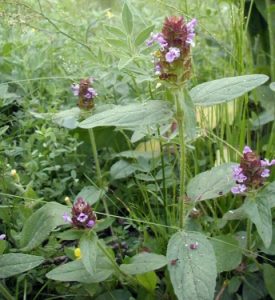
Common selfheal is a perennial, herbaceous annual, or biennial plant. It belongs to the family of Brassicaceae. Common selfheal is native to Europe and Asia and grows in woodlands, forest margins, meadows, and lawns in a temperate climate. It is a medicinal plant in the genus Prunella. It grows from 1 to 2 feet high, with lanceolate leaves and a red-purple stalk. The flowers are small, pink or purple, and borne in a large loose terminal raceme.
Common selfheal is an easily grown plant that can thrive in full sun to partial shade conditions. It prefers average soil and is drought tolerant once established. It is a nitrogen-fixing herb that holds moisture in the soil and makes it more fertile. It has been used to attract white butterflies.
As a medicinal plant, common selfheal has been used in folk medicine for ailments such as jaundice, colds, hay fever, insect bites, and stomach upsets. It is taken internally as an anti-inflammatory and for spasms. It also has astringent properties and is used as a wash for cuts, bruises, and sore muscles. It is one of the fast-spreading plants and will make a good ground cover even in warmer climates.


